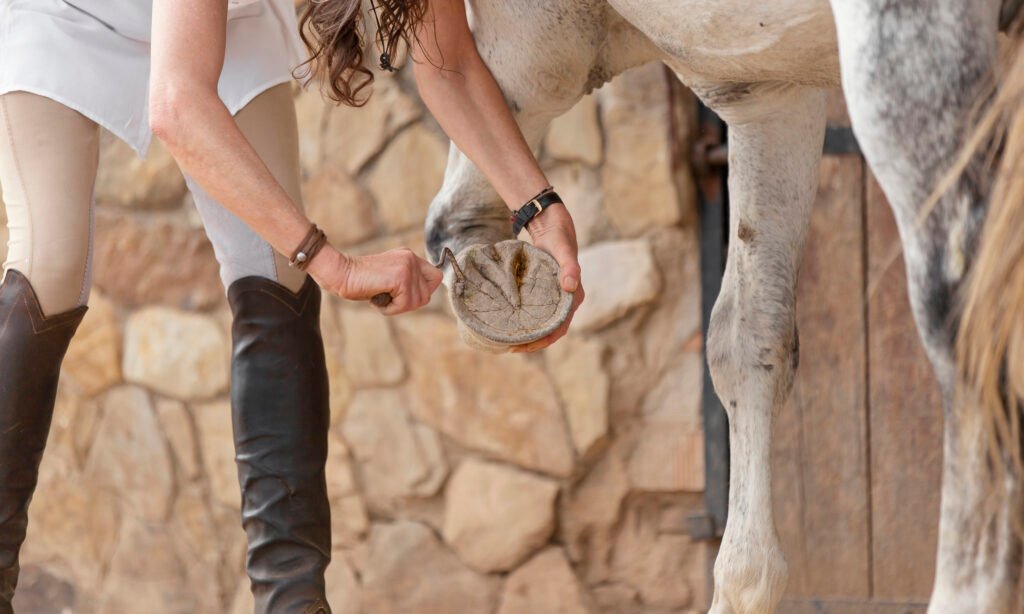Why Do Horses Need Shoes? Horses have been wearing shoes for centuries, but why do they need them? In this comprehensive guide, we’ll delve into the history of horse shoes, the purpose they serve, and the benefits they provide to these majestic animals.
Introduction
Why Do Horses Need Shoes: Horses are remarkable animals that have been domesticated for thousands of years. Throughout history, humans have relied on horses for transportation, agriculture, and even warfare. To ensure that horses can perform at their best, it’s essential to understand why they need shoes and how shoeing can benefit them.
History of Horse Shoes
The practice of shoeing horses dates back to ancient times. The earliest known horseshoes were made of leather and were used by the Romans around 400 AD. Over time, the design and materials used for horse shoes evolved, with iron becoming the standard material due to its durability and strength.
Purpose of Horse Shoes
The primary purpose of horse shoes is to protect the horse’s hooves. The hooves are made of keratin, the same material as human hair and nails, and are susceptible to wear and damage, especially on hard or rocky terrain. Shoes provide a protective barrier between the hooves and the ground, reducing the risk of injury and allowing the horse to move more comfortably.
Types of Horse Shoes
There are several types of horse shoes, each designed for specific purposes. The most common types include:
Steel Shoes: These are the most common type of horse shoe and are made of steel for durability and strength.
Aluminum Shoes: These are lighter than steel shoes and are often used for horses that need lightweight footwear.
Therapeutic Shoes: These are designed to provide additional support and cushioning for horses with hoof or leg issues.
Racing Plates: These are lightweight shoes designed for racehorses to improve traction and performance.
The Hoof and Its Importance
The hoof is a vital part of the horse’s anatomy, providing support and protection for the bones and tissues inside the hoof. A healthy hoof is essential for the horse’s overall health and well-being, and proper shoeing can help maintain hoof health.
Benefits of Shoeing Horses
Shoeing horses provides several benefits, including:
Protection: Shoes protect the hooves from wear and damage, especially on hard or rocky terrain.
Traction: Shoes can improve traction, especially in wet or slippery conditions, reducing the risk of slips and falls.
Support: Shoes can provide additional support for horses with hoof or leg issues, helping them move more comfortably.
Performance: Shoes can improve a horse’s performance, especially in competitive events like racing or jumping.
Signs Your Horse Needs Shoes
There are several signs that indicate your horse may need shoes, including:
Excessive wear: If you notice excessive wear on your horse’s hooves, especially on the outer edges, it may be time for shoes.
Difficulty walking: If your horse is having difficulty walking or seems uncomfortable, shoes may help provide the support they need.
Cracks or splits: Cracks or splits in the hooves can indicate that your horse’s hooves are not getting enough protection and may benefit from shoes.
The Process of Shoeing a Horse
Shoeing a horse is a specialized skill that should be done by a professional farrier. The process involves:
Trimming: The farrier will trim the hooves to remove any excess growth and shape them properly.
Fitting: The farrier will then measure the hooves and select the appropriate size and type of shoe.
Nailing: The shoes are then nailed to the hooves using special nails and a hammer.
Finishing: The farrier will then smooth out any rough edges and ensure that the shoes are fitted properly.
Common Misconceptions about Horse Shoes
There are several common misconceptions about horse shoes, including:
They are painful: When done correctly, shoeing should not be painful for the horse. In fact, it can provide additional support and comfort.
They are permanent: Horse shoes are not permanent and will need to be replaced regularly, usually every 4-6 weeks.
They are necessary for all horses: Not all horses need shoes. Some horses have strong, healthy hooves that do not require shoeing.
Conclusion: Why Do Horses Need Shoes
Horse shoes serve an essential purpose in protecting and supporting the hooves of these magnificent animals. By understanding why horses need shoes and the benefits they provide, we can ensure that our equine companions stay healthy and happy for years to come.
Frequently Asked Questions
Q1: Are horseshoes necessary for all horses?
A1: No, not all horses need shoes. Horses that are not regularly ridden or that have strong, healthy hooves may not require shoeing.
Q2: How long do horse shoes last?
A2:Horse shoes typically last between 4-6 weeks before they need to be replaced. However, this can vary depending on the horse’s activity level and the terrain they are ridden on.
Q3: Can I shoe my horse myself?
A3:Shoeing a horse is a specialized skill that should be done by a professional farrier. Attempting to shoe your horse yourself can result in injury to the horse or damage to their hooves.
Q4: How often should I have my horse’s hooves trimmed?
A4: Horses should have their hooves trimmed every 6-8 weeks to maintain proper hoof health and prevent issues such as overgrowth or cracking.
Q5: Are there any alternatives to traditional horseshoes?
A5: Yes, there are alternative options such as hoof boots or barefoot trimming that can be used for horses that do not require traditional shoeing.
See More





